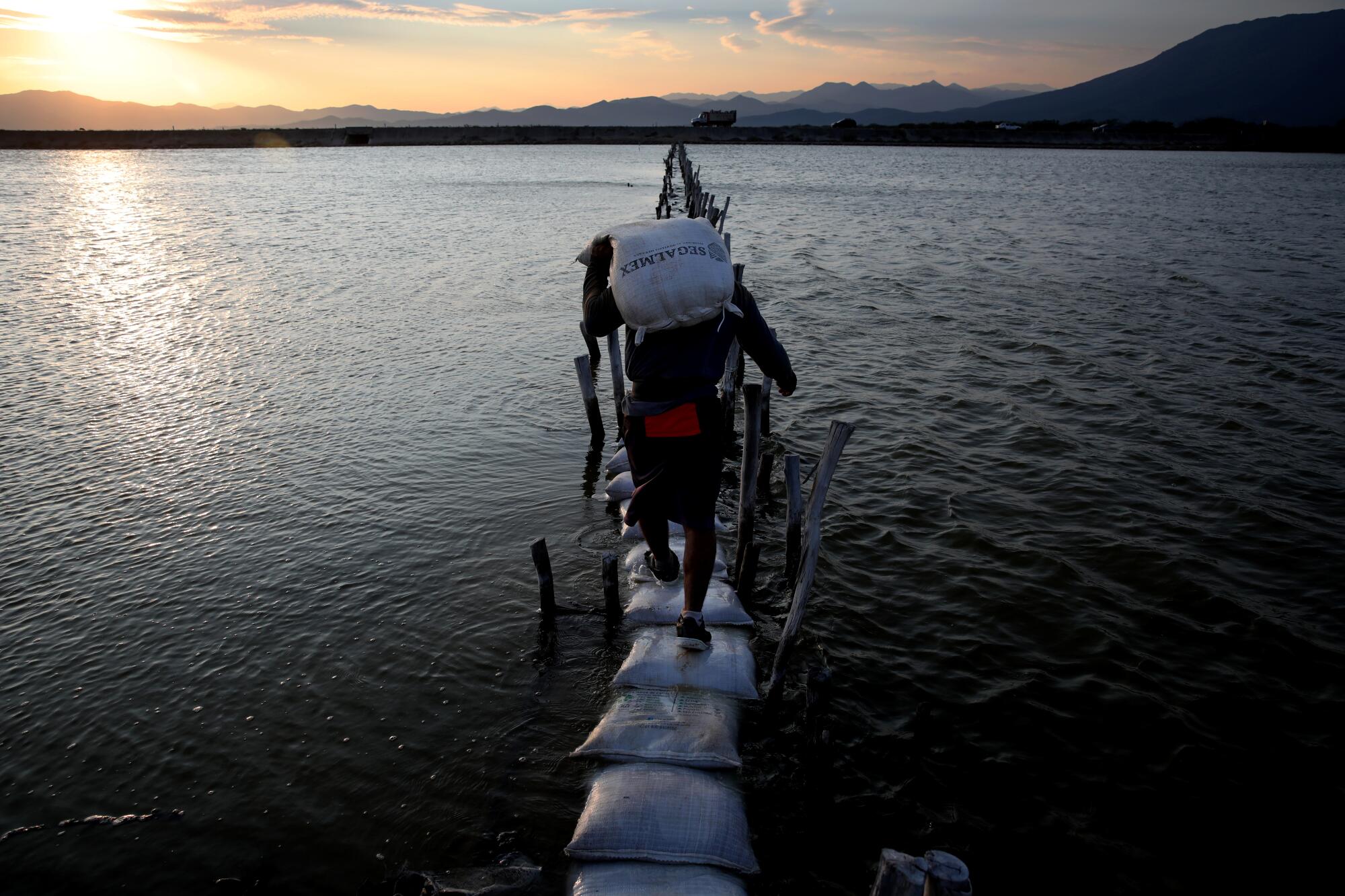
- Share via
SAYULA DE ALEMAN, Mexico — From the roadside stand in this muggy stretch of southern Mexico where Carmelo Morrugares sells coconuts for a living, the 45-year-old father of three says he can see his country changing for the better.
There’s his pay, which has doubled from $5 to $10 daily thanks to a series of minimum-wage hikes. And there are the hefty welfare payments that his elderly father and student daughter now receive from the government.
Then there’s the highway itself, repaved amid a boom of fresh investment across the impoverished south.
For all this good fortune, Morrugares credits one man: President Andrés Manuel López Obrador.
“He’s a visionary,” said Morrugares, who cheered on the president recently as he zipped past the coconut stand on his way to promote a refurbished train line that will pass through this region. That the famously frugal López Obrador traversed the dense tropical forest by car instead of helicopter said it all.
“Presidents before would just fly over,” Morrugares said. “We’ve never had a leader so close to the people.”
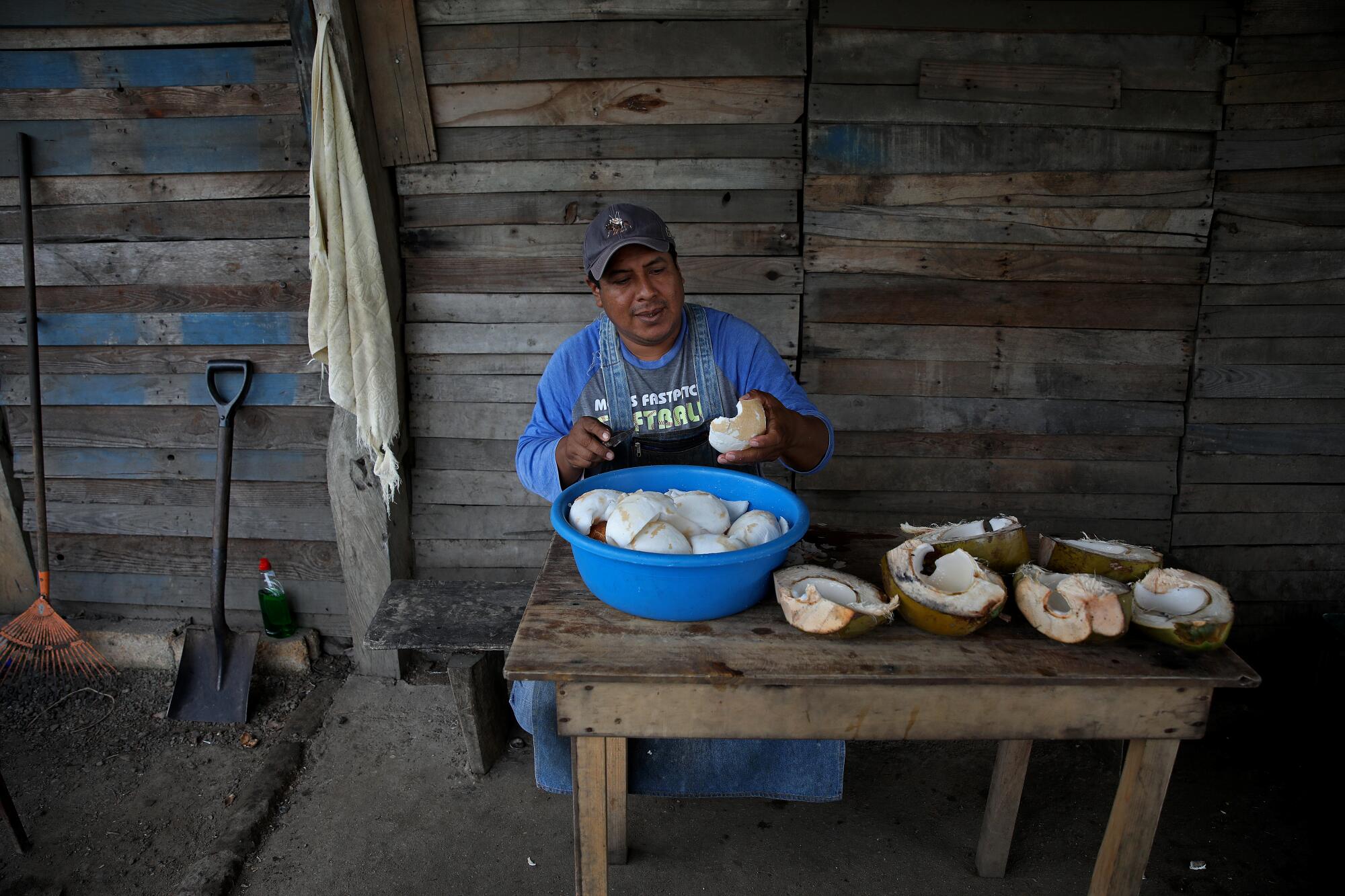
That sort of praise isn’t something you hear much in Mexico’s wealthier enclaves, where criticism of López Obrador has reached a fever pitch. Detractors, tens of thousands of whom marched in Mexico City last month, hate everything about the president: his moralizing tone and his ill-fitting suits, his disregard for democratic norms and his embrace of the military, his hypersensitivity to critique and his insistence that every problem can be blamed on a single enemy — the rich.
But as they pen newspaper columns and fire off tweets insisting that Mexico has never been worse off, his critics are speaking largely to themselves.
López Obrador is one of the most popular leaders on Earth.
He won in a landslide four years ago vowing to finally put the “poor first” in a country that he said had been hijacked by a corrupt and conservative elite. And despite a stagnating economy, staggering levels of violence and growing evidence that his efforts to reduce inequality have failed, his approval rating still tops 60%.
To better grasp the breadth of that support, The Times traveled this month across the Isthmus of Tehuantepec, a 140-mile wide strip of land that spans two states — Veracruz and Oaxaca — and stretches from the Pacific Ocean to the Gulf of Mexico.
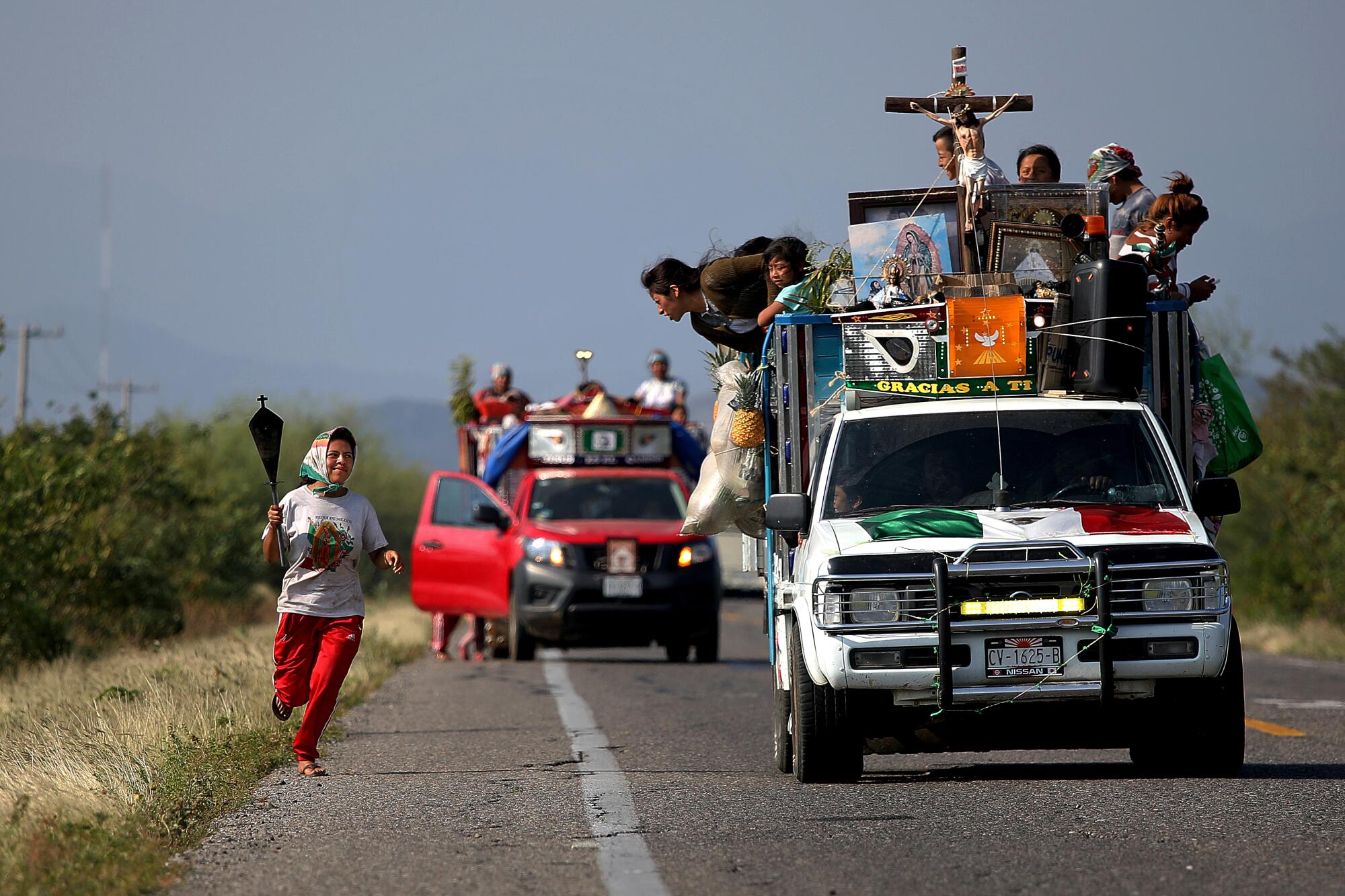
Here in the hinterlands, far from cosmopolitan Mexico City and the thriving industrial hubs in the north, it quickly becomes clear why AMLO, as he is widely known, is so beloved.
As the sun sank over the Pacific near the Oaxacan port city of Salina Cruz, 63-year-old Carlos Estrada hurried to finish work in the salt mine where he has labored since he was 15.
Wearing a brace to support his back, he heaved 110-pound bags of dirt onto the shoulders of his son, who was building a shallow basin used to isolate salt from seawater.
Estrada always assumed he would work until he died, like his father and grandfather before him. As one of almost 60% of Mexicans toiling in the informal economy, he is not eligible for a pension.
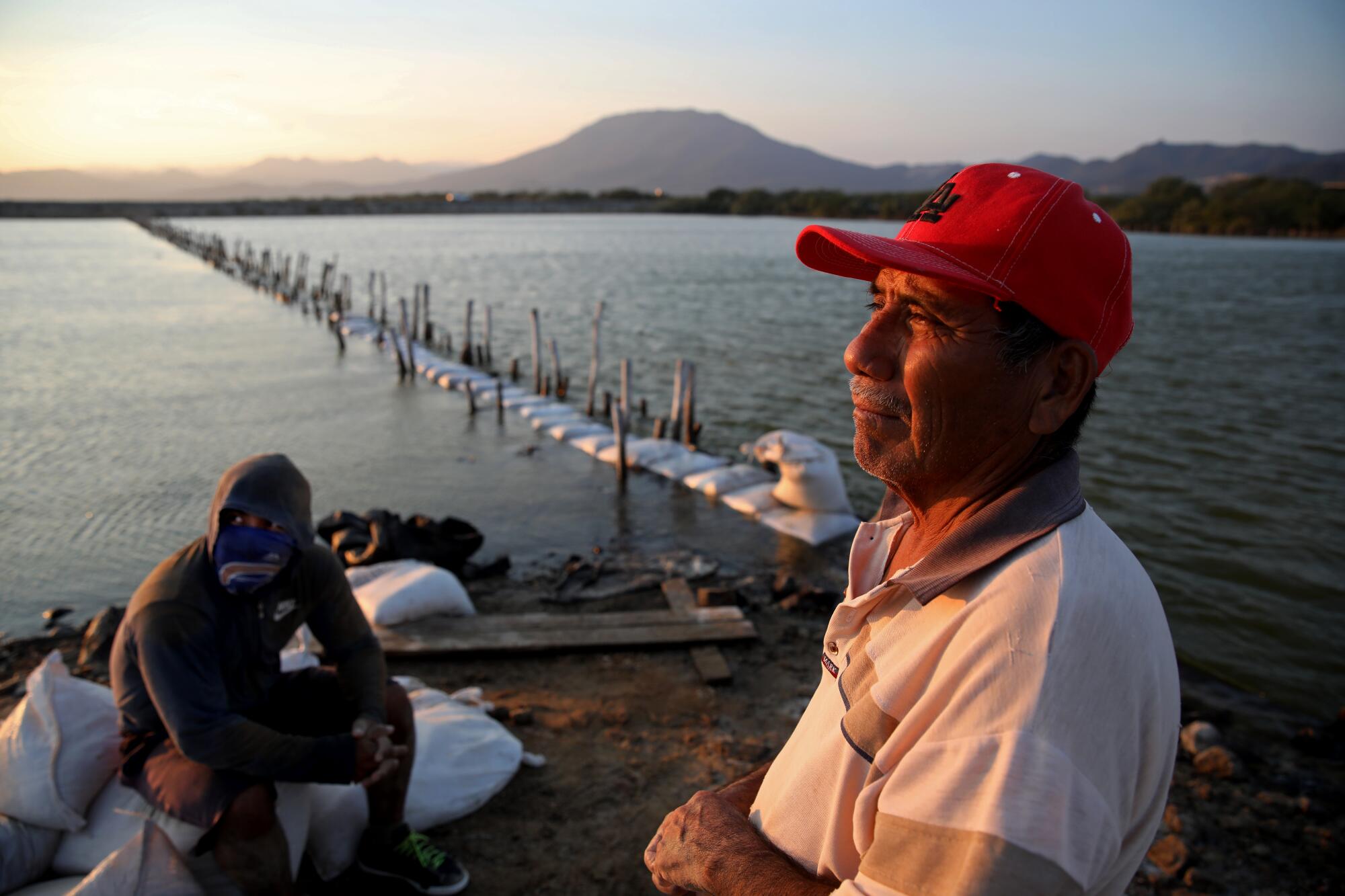
But López Obrador has vastly expanded the nation’s welfare system, giving cash transfers to 10 million older Mexicans along with millions of students, young workers and people with disabilities.
When Estrada turns 65, he’ll receive $300 every two months, enough to allow him to retire. “If God wills it and I’m still alive then, I will really enjoy it,” he said.
If there is one López Obrador policy that has pumped up his popularity, it is these direct payments. In Oaxaca, nearly every household is benefiting from at least one of the entitlement programs.
At the same time, electric bills and gas prices have fallen here in the south thanks to new government subsidies.
The president’s critics write-off such programs as a cynical play for votes. Many economists say inequality hasn’t improved, in part because López Obrador has cut other anti-poverty initiatives.
But Estrada says he can see a difference.
He and his family used to eat meat only once every two months. Now, they eat it every two weeks.
“The president,” Estrada said, “is really good people.”
Out on the water, hulking oil tankers bobbed on the waves in the fading light — another reason that López Obrador is appreciated here.
State oil producer Petroleos Mexicanos, long one of the only sources of decent jobs in the south, has struggled for decades and until recently seemed on the verge of collapse as the energy sector began to open to foreign investment and renewable sources like wind and solar.
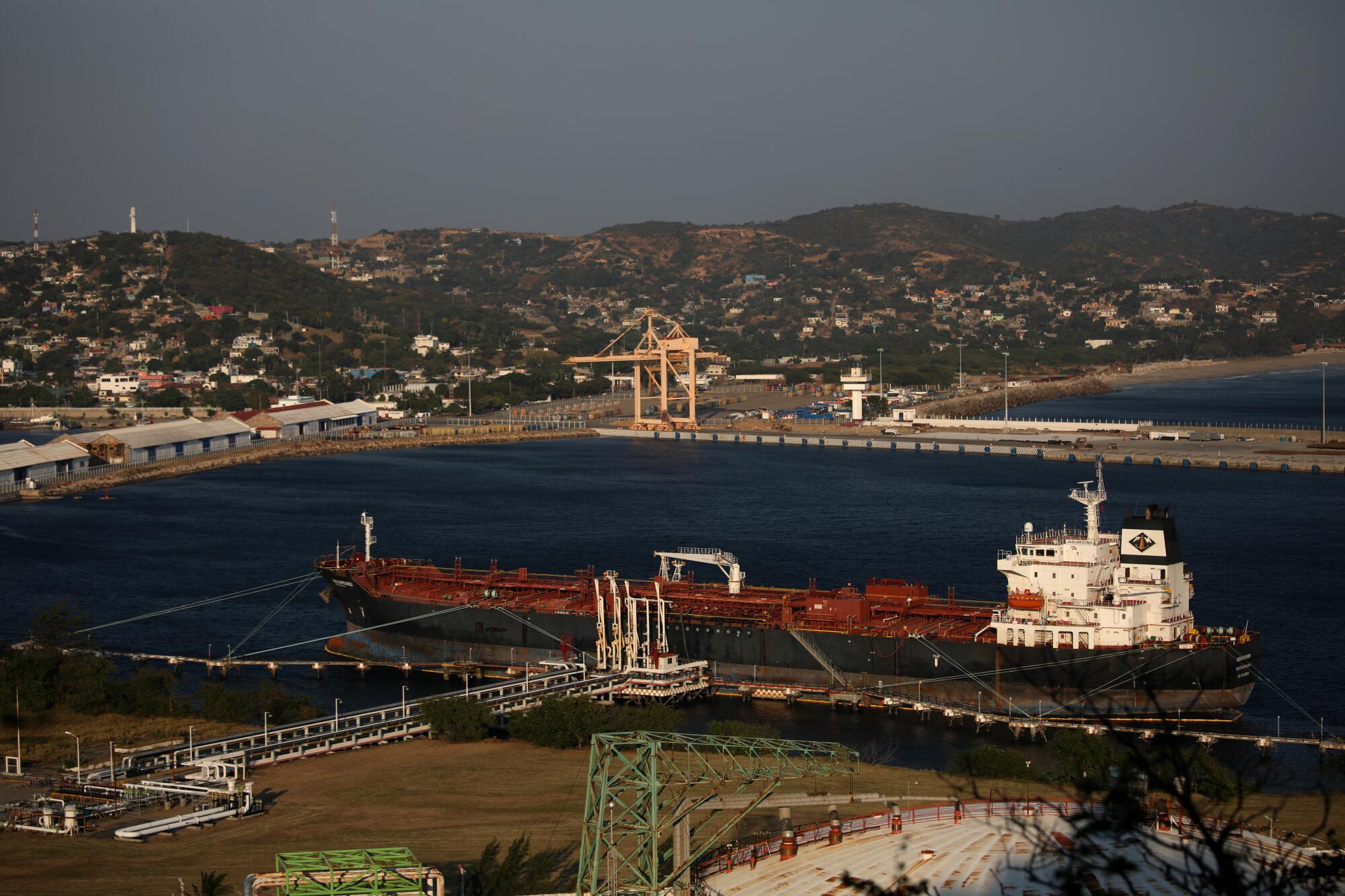
Rejecting those reforms, the president has funneled billions into Pemex, keeping it on life support even as its production of crude has plummeted and it has become the most indebted oil producer in the world.
Environmental activists have decried his embrace of fossil fuels, including the construction of a $12-billion oil refinery in nearby Tabasco. Top U.S. and Canadian officials say his nationalist policies violate regional free trade agreements.
The thousands of Pemex employees who work in and around Salina Cruz have a different view.
“If Pemex disappeared, it would turn this into a city of slaves where everybody makes minimum wage,” said Teresa Marin, 60, who retired from the company five years ago with a pension that has afforded her a middle-class life: a silver SUV, lunch dates with friends, and even a recent vacation to Colombia.
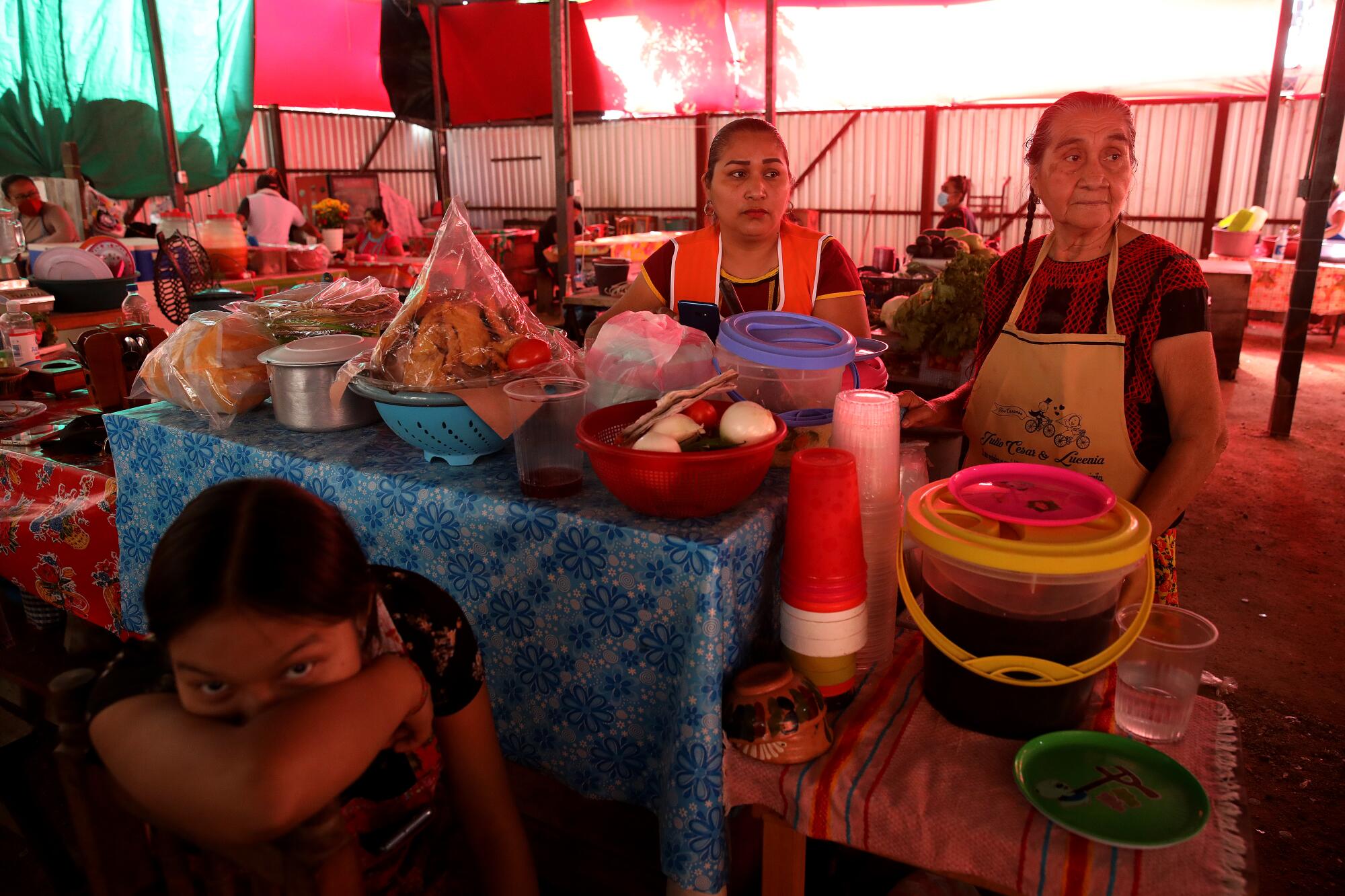
She greeted López Obrador with a homemade poster the last time he came to town. She was struck by his humility when he stopped on the side of the road for a snack of gorditas and atole, a traditional corn drink.
While previous leaders resided in Mexico’s elegant presidential palace and traveled the world on private jets, López Obrador lives in a small apartment inside his downtown office and flies commercial — always in coach. He speaks directly to the nation for two hours at a televised news conference each weekday morning, expounding on history and world events, ranting against his “racist and classist” political opponents and otherwise setting the agenda for the day.
It doesn’t hurt that he was born in a dusty village in the nearby state of Tabasco, and that his father was an oil worker, Marin said.
“He’s not an elite,” she said. “We can identify with him.”
Twelve miles inland, on the outskirts of a town called Santo Domingo Tehuantepec, another signature López Obrador project is taking shape.
On a recent morning, workers were laying fresh tracks on the train route that will cross the isthmus, carrying cargo from the Pacific to the Gulf. Officials are planning several industrial parks along the route in hopes of making the isthmus an alternative to the Panama Canal.
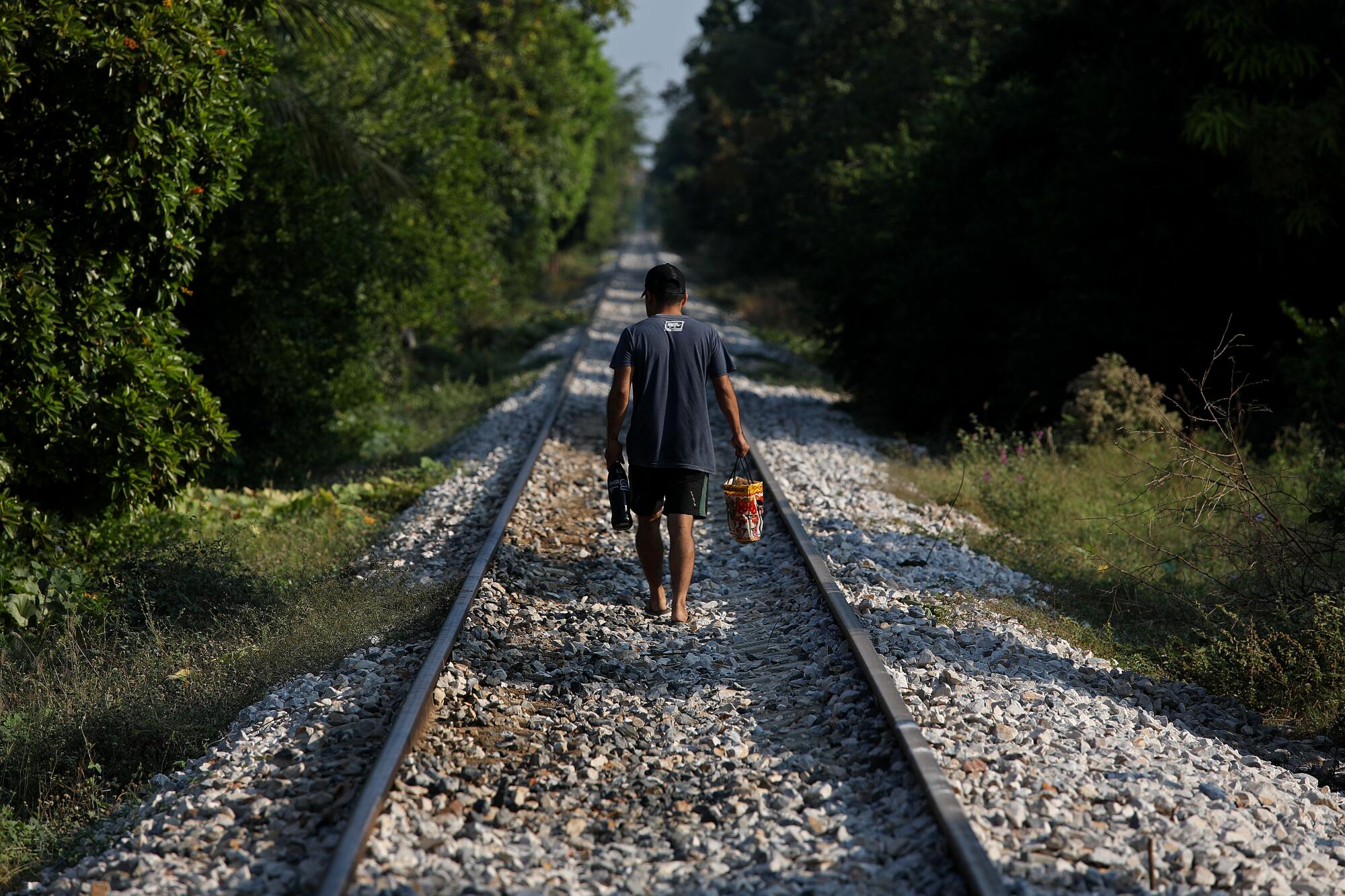
Like another project López Obrador has launched in the south, a tourist train through the Yucatan peninsula, this one has been plagued by concerns about graft and environmental destruction and has angered homeowners who are being forced to relocate.
But for Heriberta Sosa, a 44-year-old who runs a small paper store near the tracks, the relocation of some of her neighbors is worth it to bring an engine of development that might allow her children to stay in Oaxaca instead of seeking work elsewhere. She and her husband spent years being paid under the table in factories and restaurants in South Carolina to save enough money to open a business here.
“This is going to benefit the whole isthmus,” she said. “Some of us are going to have to pay.”

On a windswept hill 80 miles north, 77-year-old Maurilio Galeana Alejo stood quietly before his son Amadeo’s grave.
Amadeo left this village, Boca del Monte, in the 1990s.
The North American Free Trade Agreement had just taken effect, eliminating most tariffs across the continent and bringing hundreds of new factories to central and northern Mexico.
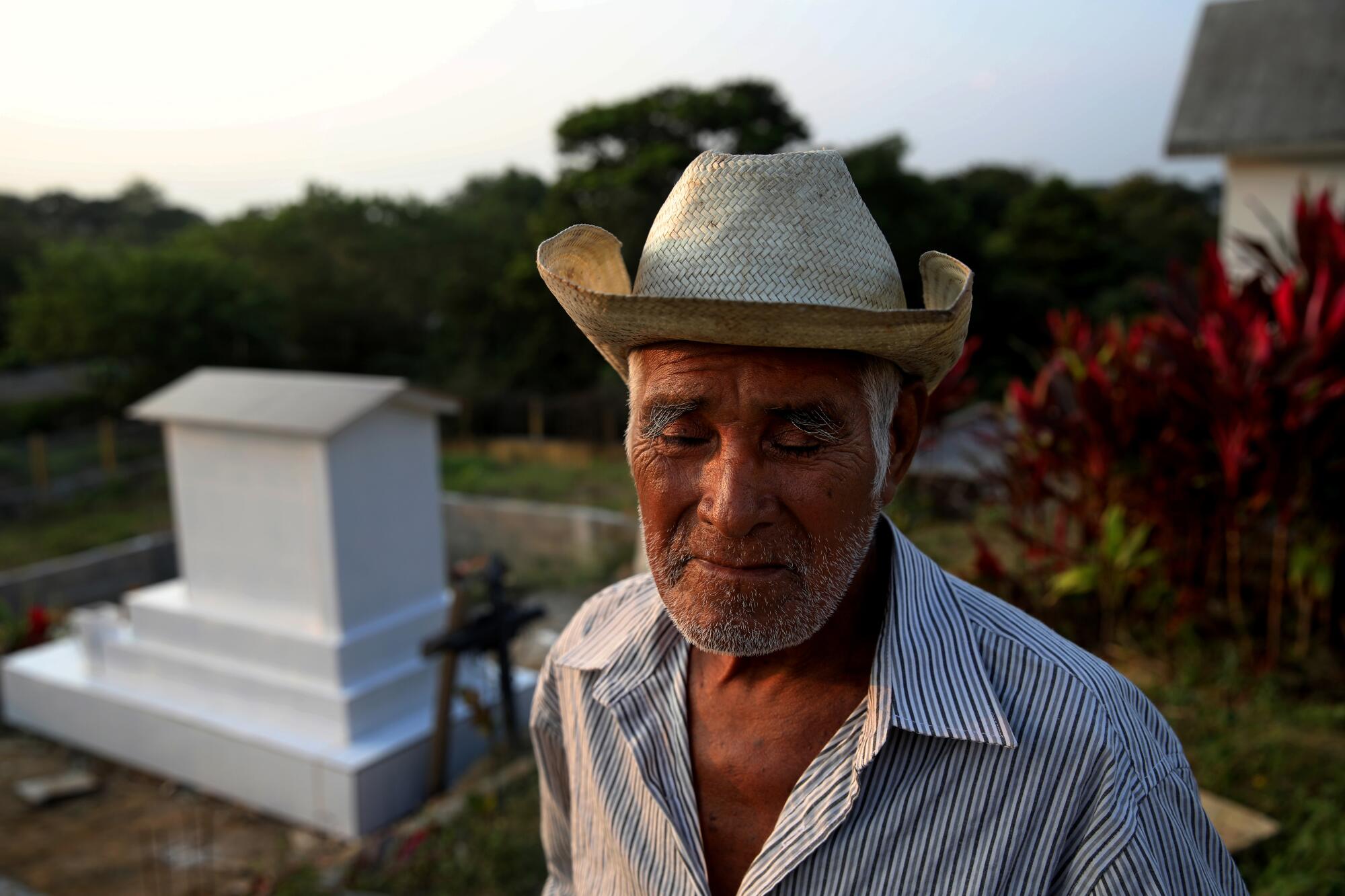
The ranks of Mexican billionaires expanded rapidly. But for small farmers like Galeana, the trade deal was devastating. How could his homegrown corn compete with imports from U.S. agribusinesses, many of which received subsidies from the U.S. government?
“There was nothing to eat here,” Galeana said. So at 15 his son migrated to the United States.
Amadeo returned nearly three decades later in a casket. He had died of cancer while working in Wisconsin.
Galeana was angry that he had missed knowing his son as an adult. He was angry about generations of Mexican leaders that he said had “screwed over” the rural poor.
As a rule, he was suspicious of politicians, but López Obrador, he said grudgingly, seemed different.
“Neo-liberalism failed,” the president has repeatedly declared, a not so contentious conclusion in a country where people work longer hours than almost anywhere in the world yet 40% can’t afford basic food.
While López Obrador has continued many of the same free-market policies of his predecessors, he has also focused new programs in the regions that he says were most left behind globalization. “We’re doing justice for south and southeast Mexico,” he says.
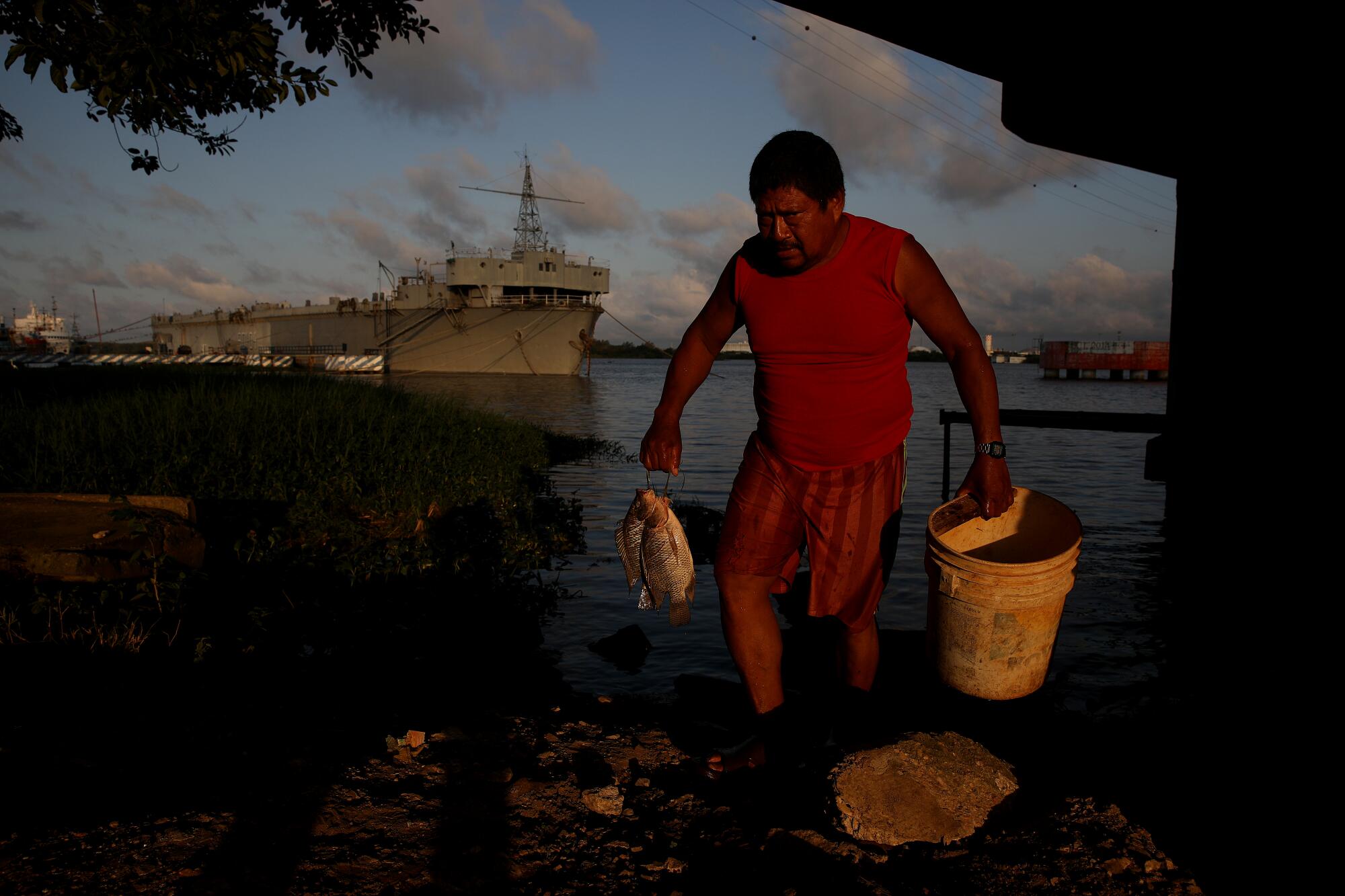
Some of his programs are aimed specifically at people like Galeana, including one called Sembrando Vida that pays farmers to plant trees.
It has been mired in scandal, with environmentalists claiming that it is in fact fueling deforestation because farmers must have cleared plots of land to be eligible to join. Still, Galeana sees it as a positive sign.
“We’re less screwed up than we were before,” he said as he cleared off the headstone ahead of a ceremony to commemorate the anniversary of his son’s death. “This government is giving us more.”
As the highway winds into Veracruz state, the dry hills of Oaxaca give way to dense forest. The Gulf lies ahead.
In the city of Coatzacoalcos, the malecon that stretches along the water used to be filled with bars and nightlife, the beaches crowded with tourists. But the economy shriveled as cartels took over and gang violence — including a 2019 arson attack that killed 31 people in a club — scared away visitors. Much of the malecon is abandoned now except for squatters and stray dogs.
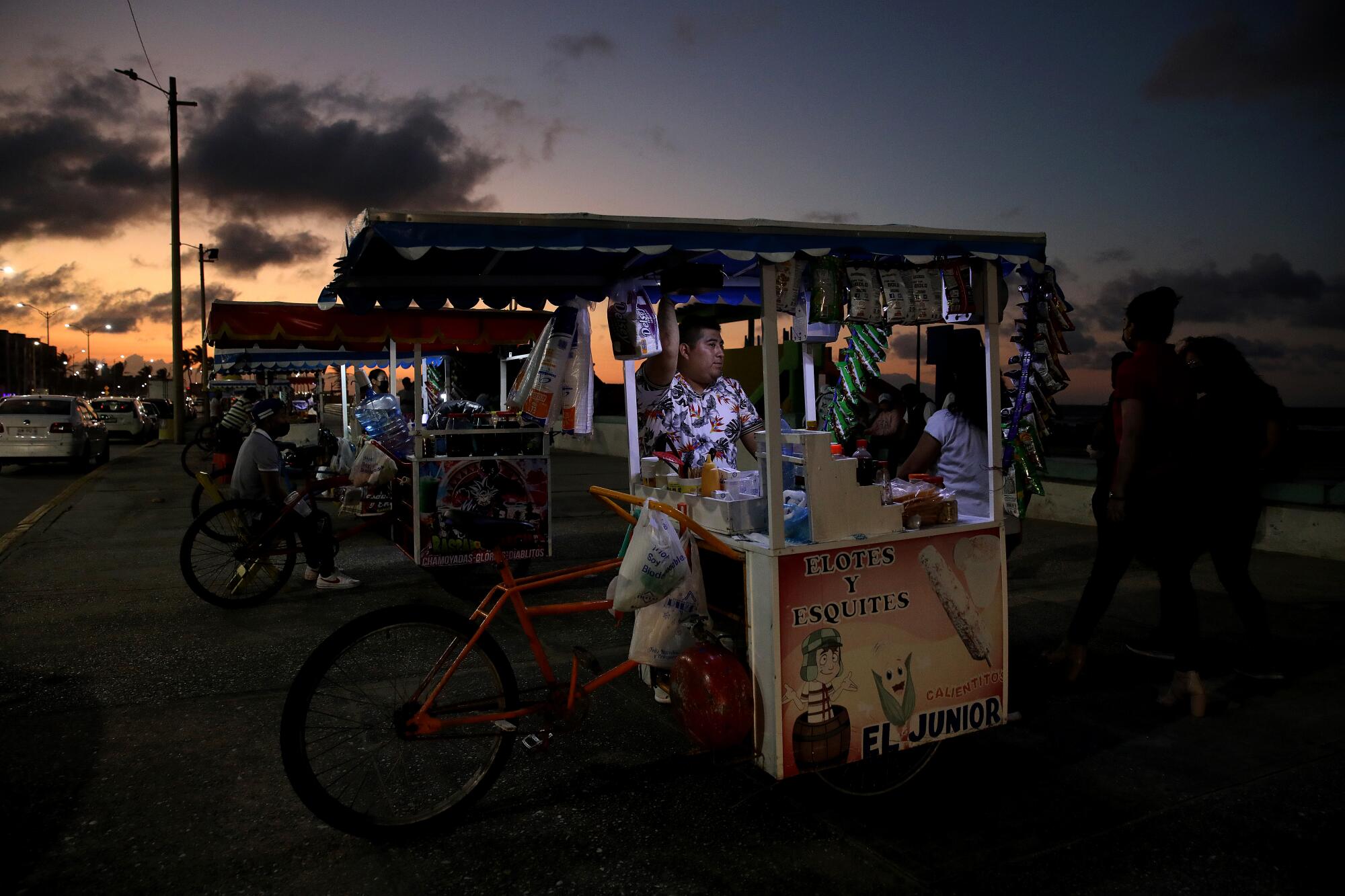
Much of the country is in a similar purgatory — strangled by criminal groups that are often interlocked with local politics and demand extortion payments from local businesses.
López Obrador promised to bring peace to Mexico. His main strategy to reduce violence — doubling the number of federal troops deployed across the country — has had little impact here. Coatzacoalcos remains one of Mexico’s deadliest cities.
Polls show that most Mexicans are very worried about the violence. They are also concerned about the economy, which was battered by the COVID pandemic and has been slow to recover. Economists say that López Obrador deserves part of the blame because — apart from his pet projects — he has embraced a policy of austerity.
Yet there he is, his silver hair, tanned skin and white smile emblazoned everywhere across this region, on billboards, murals and posters hung proudly outside of homes.
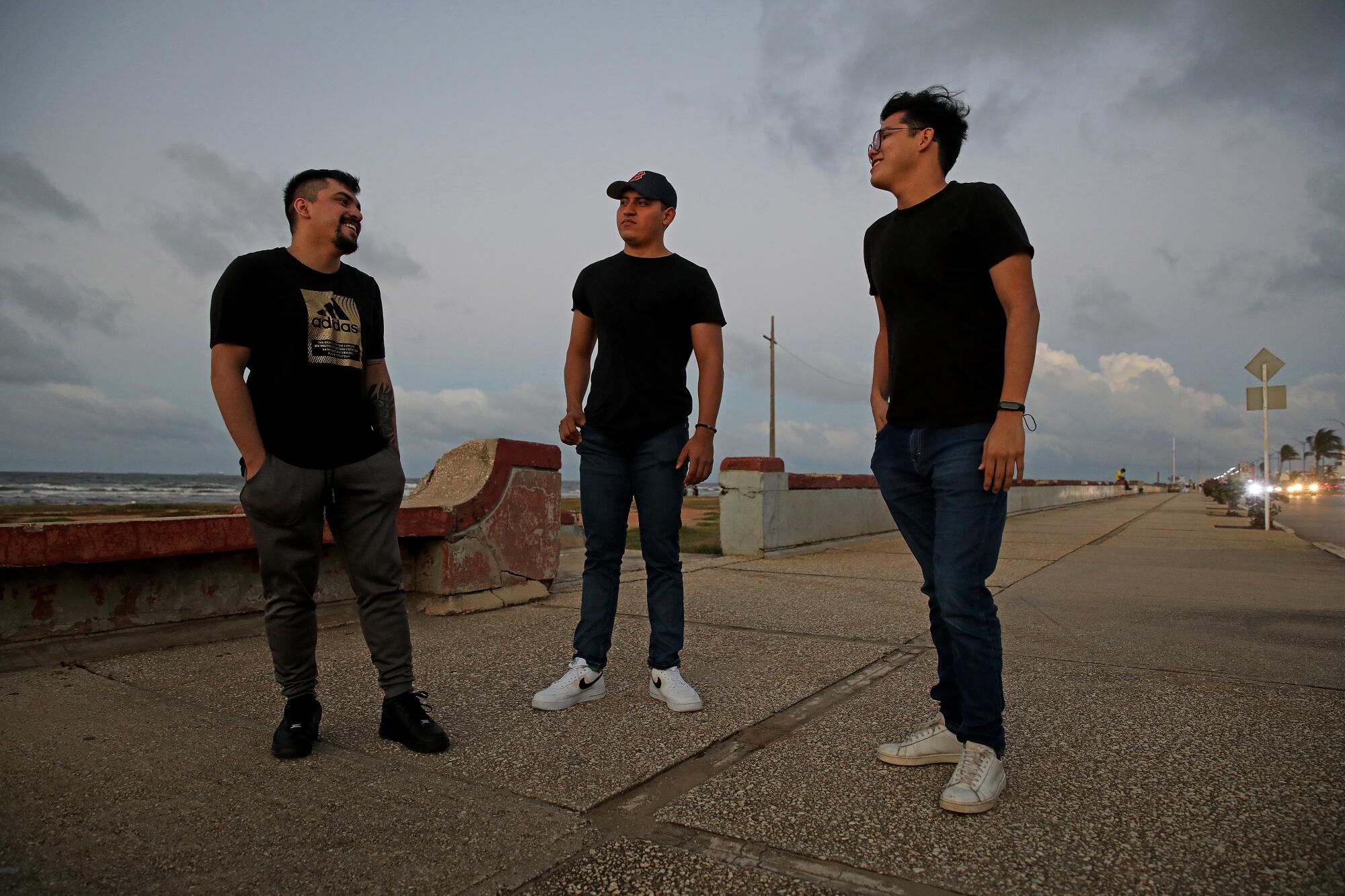
Jeremy Morales, 21, and Enrique Castañeda, 22, debated why on a recent afternoon as they strolled along the mostly deserted beach on a break in between exams at a nearby university.
“It’s the money,” said Castañeda. “Everybody knows somebody who has been helped.”
“But that’s not the way to move the country forward,” Morales said. “You won’t get rid of poverty by just giving away cash.”
“At least he’s not stealing it,” Castañeda said. “We’re so used to leaders who are so bad.”
“It’s true,” Morales said, laughing. He paused. “I guess it doesn’t take much to make us thankful.”
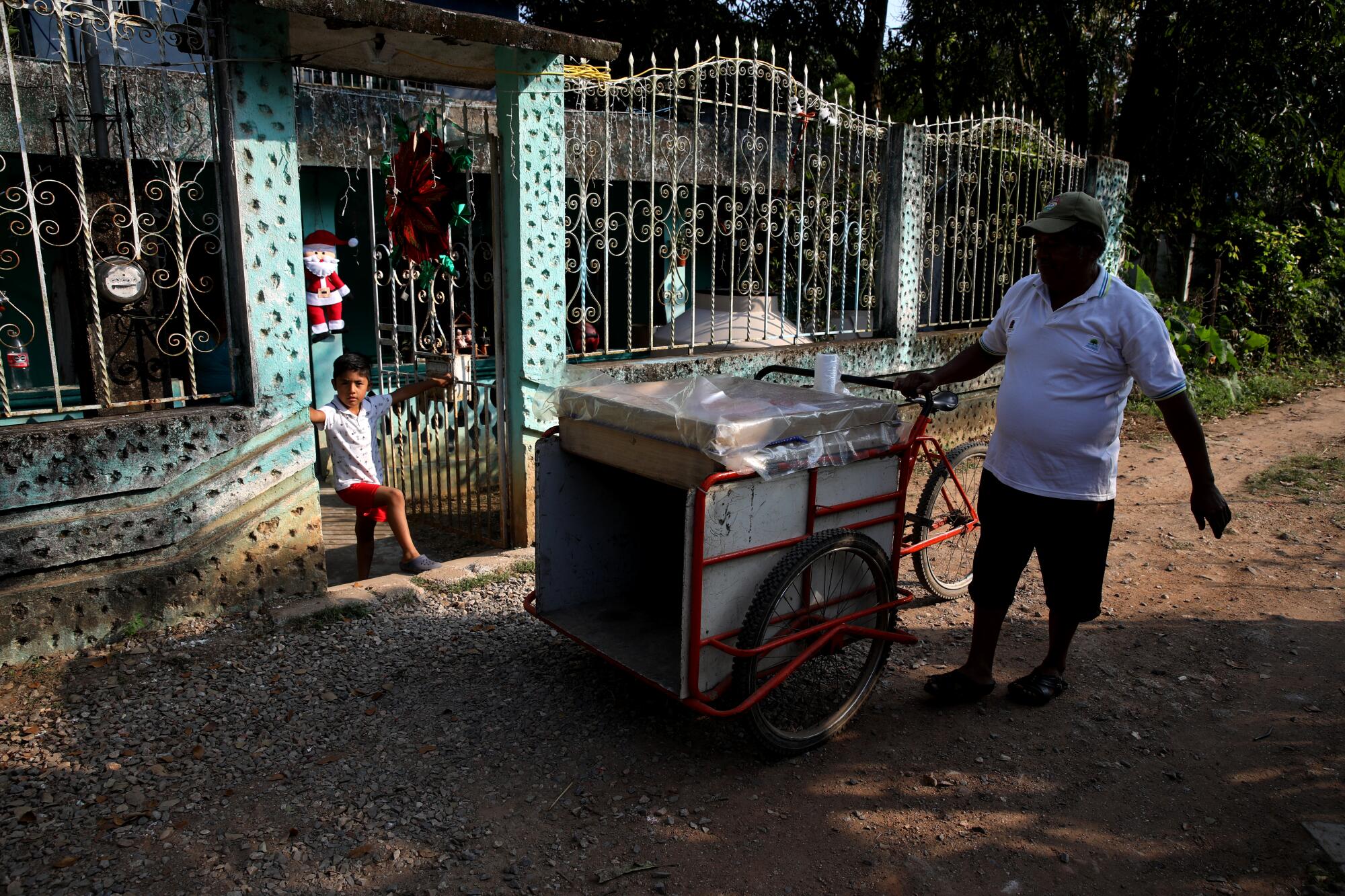
Cecilia Sanchez in The Times’ Mexico City bureau contributed to this report.
More to Read
Sign up for Essential California
The most important California stories and recommendations in your inbox every morning.
You may occasionally receive promotional content from the Los Angeles Times.












